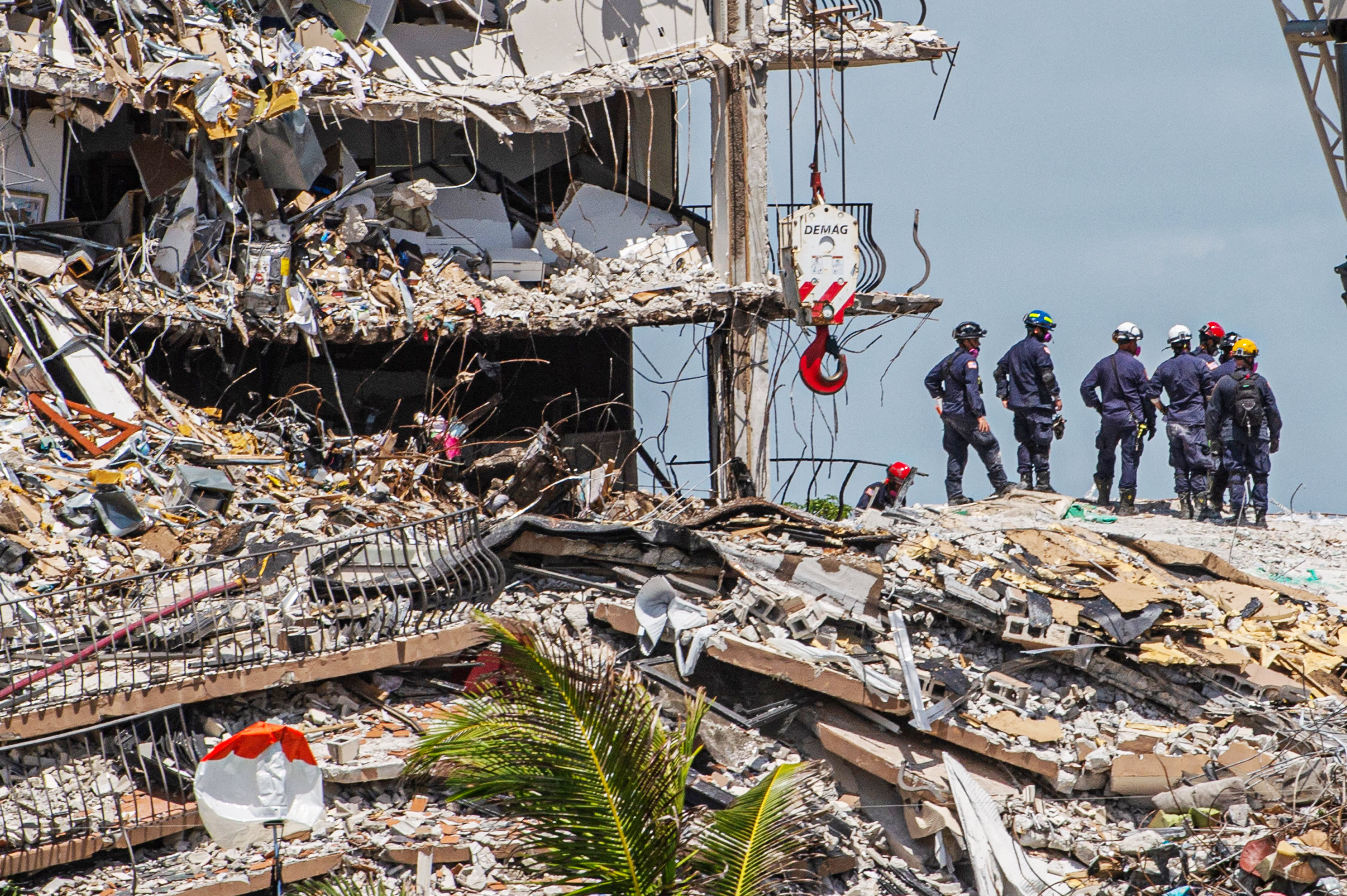Families of the 98 people who died in the collapse of Champlain Towers South in June 2021 found out Thursday they will now have to wait at least another 19 months for answers from the federal government as to what caused the disaster.
Investigators with the National Institute of Standards and Technology announced the “unfortunate” 11-month delay from their previous schedule during an overview and update they provided to the National Construction Safety Team Advisory Committee outside Washington, DC.
Watch NBC6 free wherever you are
>The delay further frustrated the one family member who spoke during the committee’s public comment period.
“What's going on here? It’s a joke,” said Pablo Langesfeld, who lost his daughter Nicole and son-in-law. “We need answers now. We need answers today. We cannot wait any longer.”
Get local news you need to know to start your day with NBC 6's News Headlines newsletter.
>Surfside condo collapse
After spending $32.6 million over more than three years, NIST said “difficulties and setbacks” require them to add nearly a year to their schedule before a report will be issued for public consumption in April 2026 – and that assumes no more problems or “surprises.”
“Unfortunately, we have faced technical and programmatic delays that have caused us to adjust our timeline,” said lead investigator Judith Mitrani-Reiser. “We will issue our report for public comment as soon as the science permits, and we will continue keeping communities in Surfside and Miami-Dade County informed of our progress.”
“While we make every effort to position our team well to fully transition to dissemination of our findings, the release of our reports is expected to be delayed further due to technical and programmatic delays,” she told the committee.
Glenn Bell, the associate lead investigator, detailed some “challenges” causing the delay, but withheld certain information discovered in the testing of columns that has altered the team’s view of their role in the failure, saying it was premature to announce that publicly.
He did cite difficulties their testing contractor has had trying to replicate the slab-column connections that existed when the pool deck collapsed, followed minutes later by most of the condominium’s units tumbling or pancaking onto lower levels.
They were unable to produce “specimens that are replicas as close as possible to what existed at CTS,” Bell said, citing problems duplicating the concrete strength, dimensions, tolerances and flatness. Plus there were “challenges with mixing and placing that led to some consolidation problems,” Bell said.
“The CTS program has had difficulties and setbacks,” Bell said, noting its testing contractor had to bring in extra help. “We’ve had to pause on occasions to reflect on the challenges, and to take corrective actions, bring in new expertise, modify our processes, but we’re on track now.”
“As we peel back more layers of the onion, new realizations appear that must be pursued,” Bell said, citing “surprises” such as a sample of concrete from a piling that could withstand only 1,700 pounds per square inch (PSI) of load, far below the minimum standard of 3,000 PSI.
But he conceded, that the result has not changed the team’s opinion that problems in the piling or foundation were “very unlikely to contribute to the failure.”
In fact, the test results did not even move up that “failure hypothesis” from what has been considered a very low probability.
“It’s caused us to look more rigorously at the impact of variability,” he said, “but it hasn’t at this point changed our ranking of hypotheses.”
Jose “Pepe” Izquierdo, committee chairman, did not express concern with the delay, but said he was “glad the work is moving forward. These kinds of delays in the testing I was expecting them to happen. It’s not so easy.”
Another reason for the delay, Bell said: A NIST employee’s leave and subsequent departure forced NIST to get a new arrangement with a South Florida geotechnical engineer, adding more costs and time.
Also, he said, they’re not sure the concrete from above-ground elements that has been recovered – which does exceed the 3,000 PSI limit – represents a fair selection of all the concrete that was present, especially after some witnesses said concrete they touched on site seemed “crumbly.”
“We’re doing everything possible to mitigate delays and will continue to work hard to bring this investigation to a close as soon as possible,” Bell said.
“We don’t need more hypotheses,” said the frustrated father, Langesfeld. “We need solid and concrete answers. Families of the victims deserve closure and those responsible must be held accountable.”
In an interview with NBC6 after the hearing, he added, “Not even one solid concrete answer and we have to wait basically two more years to find answers? There’s something wrong.”


